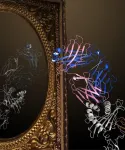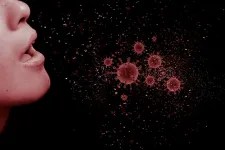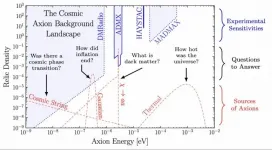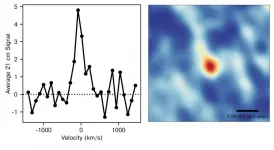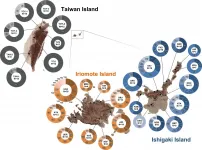New drug to halt dementia after multiple head injuries
World-first breakthrough to help athletes and blast victims
2021-06-07
(Press-News.org) A world-first international study led by the University of South Australia has identified a new drug to stop athletes developing dementia after sustaining repeated head injuries in their career.
The link between concussion and neurogenerative diseases is well established, but new research findings could halt the progression of chronic traumatic encephalopathy (CTE) in sportspeople who sustain repeated blows to the head.
CTE is a progressive and fatal brain disease associated with the accumulation of a protein known as hyperphosphorylated tau which affects cognition and behaviour.
In a paper published in Scientific Reports, UniSA Emeritus Professor Bob Vink and colleagues show how repeated concussions can cause CTE and a way to block it with a specially developed drug.
The findings will potentially have significant implications for athletes who play contact sports - such as boxers and footballers - as well as military veterans sustaining head injuries in conflict.
The team of researchers from Adelaide, Melbourne and the United States say the brain releases a neurotransmitter called substance P in the event of a head injury, causing abnormal amounts of the tau protein to collect inside neurons.
"Tau protein tangles are a feature of CTE, which reportedly leads to memory problems, confusion, personality changes, aggression, depression and suicidal thinking," Prof Vink says.
"Our research shows that by blocking substance P with a specific drug, we can prevent the tau protein tangles from developing in the brain and causing neurological problems."
The treatment was successfully tested in animal models, giving hope that CTE can be prevented in humans.
Prof Vink says the next step is human clinical trials, but that could take several years given that currently CTE can only be diagnosed post-mortem.
A study of 14,000 Americans over 25 years, published in Alzheimer's and Dementia in March, showed that people who sustained even one head injury were 25 per cent more likely to develop dementia later in life. This risk increased with multiple traumatic brain injuries.
The Guardian also reported in April that an analysis of late AFLW player Jacinta Barclay's brain uncovered neurological damage at age 29, highlighting the risks of repeated concussions to both sexes. Previous research has focused on the impact of brain injuries in male athletes, but females are more likely to sustain concussions.
INFORMATION:
Notes for Editors
"NK1 antagonists attenuate tau phosphorylation after blast and repeated concussive injury" is published in Scientific Reports. For a copy of the paper please email candy.gibson@unisa.edu.au
The research team was comprised of scientists from the University of South Australia; University of Adelaide; Mercer University School of Medicine, USA; Monash University; and The Alfred Hospital.
[Attachments] See images for this press release:
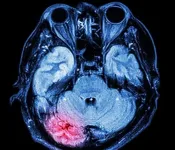
ELSE PRESS RELEASES FROM THIS DATE:
2021-06-07
LA JOLLA, CALIF. - June 7, 2021 - A preclinical study led by scientists at Sanford Burnham Prebys has established that AAV8-TNAP-D10--a gene therapy that replaces a key enzyme found in bone--may be a safe and effective single-dose treatment for hypophosphatasia (HPP). The study, published in the Journal of Bone and Mineral Research and performed in a murine model of the disease, further supports advancing the therapy toward human clinical trials.
"This is the most promising gene therapy study to date demonstrating a successful increase in life span, and improvement ...
2021-06-07
Monash University researchers have provided a fundamental advance regarding how T cells become activated when encountering pathogens such as viruses.
The recent study published in Science, co-led by Professor Nicole La Gruta, Professor Jamie Rossjohn and Professor Stephanie Gras with first author Dr Pirooz Zareie from the Monash Biomedicine Discovery Institute, have found that T Cells need to recognise pathogens in a particular orientation in order to receive a strong activating signal.
T cells play a key role in the immune system by eliminating invading pathogens, such as viruses, and it is crucial to understand ...
2021-06-07
When we inhale isolated coronavirus particles, more than 65% reach the deepest region of our lungs where damage to cells can lead to low blood oxygen levels, new research has discovered, and more of these aerosols reach the right lung than the left.
Lead author of the study Dr Saidul Islam, from the University of Technology Sydney, said while previous research has revealed how virus aerosols travel through the upper airways including the nose, mouth and throat - this study was the first to examine how they flow through the lower lungs.
"Our ...
2021-06-07
Finding the hypothetical particle axion could mean finding out for the first time what happened in the Universe a second after the Big Bang, suggests a new study published in Physical Review D on June 7.
How far back into the Universe's past can we look today? In the electromagnetic spectrum, observations of the Cosmic Microwave Background -- commonly referred to as the CMB -- allow us to see back almost 14 billion years to when the Universe cooled sufficiently for protons and electrons to combine and form neutral hydrogen. The CMB has taught us an inordinate amount about the evolution of the cosmos, but photons in the CMB were released 400,000 years after the Big Bang making it extremely challenging to learn about the history of ...
2021-06-07
TAMPA, Fla. (June 4, 2021) — Type 1 diabetes (T1D) is an autoimmune disease in which a misdirected immune system gradually destroys healthy pancreatic islet β cells, resulting in a lack of insulin. The exact cause of T1D remains unknown. However, β cell-reactive autoantibodies can be detected in circulating blood months to years before diagnosis, raising the possibility of intervening to stop or delay T1D before children develop the disease.
Monitoring the number, type, and concentration of autoantibodies appearing in the blood can help predict the long-term risk of progression from autoimmunity to symptomatic T1D.
Now new findings suggest that measuring how patterns ...
2021-06-07
A research team from the University of Copenhagen and University of Helsinki demonstrates it is possible to predict individual preferences based on how a person's brain responses match up to others. This could potentially be used to provide individually-tailored media content -- and perhaps even to enlighten us about ourselves.
We have become accustomed to online algorithms trying to guess our preferences for everything from movies and music to news and shopping. This is based not only on what we have searched for, looked at, or listened to, but also on how these activities compare to others. Collaborative filtering, as the technique is called, uses hidden ...
2021-06-07
A team of astronomers from the National Centre for Radio Astrophysics (NCRA-TIFR) in Pune, and the Raman Research Institute (RRI), in Bangalore, has used the Giant Metrewave Radio Telescope (GMRT) to measure the atomic hydrogen gas content of galaxies 9 billion years ago, in the young universe. This is the earliest epoch in the universe for which there is a measurement of the atomic hydrogen content of galaxies. The new result is a crucial confirmation of the group's earlier result, where they had measured the atomic hydrogen content of galaxies 8 billion years ago, and pushes our understanding of galaxies to even earlier in the universe. ...
2021-06-07
Decades of research has revealed the remarkable morphological adaptations of sea snakes to aquatic life, which include paddle-shaped tails, salt-excreting glands, and the ability to breathe through their skin.
In a new study published in Biological Journal of the Linnean Society, researchers at the University of Adelaide detail the enlarged touch receptors that evolved in male turtle-headed sea snakes (Emydocephalus annulatus), to help them locate and court females in aquatic environments.
Lead author, Jenna Crowe-Riddell, PhD graduate at the University of Adelaide's School of Biological Sciences, says on land, snakes use tongue-flicking ...
2021-06-07
Older people need digital skills training to learn to use digital technology more independently, but they also seek digital training opportunities because of the social benefits they offer, according to a recent study from the University of Eastern Finland. Published in International Journal of Lifelong Education, the study examined perceived benefits of digital skills training among older adult learners, their teachers and peer tutors. Data for the study were collected in liberal adult education organisations, such as community colleges, as well as in peer tutoring sessions organised by third sector actors.
New skills and friendships
The coronavirus pandemic has, for its part, highlighted inequalities in the availability and ...
2021-06-07
The Amami, Okinawa region of Japan may be designated a World Heritage Site in July of 2021 based on the recent recommendation from the IUCN. The Iriomote wild cat is a symbolic species of the region, having evolved independently on the island. The area is home to many other highly endemic and unique evolutionary species. A research group comprised mostly of former students of Professor Koji Tojo's Faculty of Science lab of Shinshu University focused on the study of dragonflies, continuing from their previous study of their comparative embryogenesis. About 5,000 species of insects belonging to 26 families of the order Dragonfly are known ...
LAST 30 PRESS RELEASES:
[Press-News.org] New drug to halt dementia after multiple head injuries
World-first breakthrough to help athletes and blast victims


